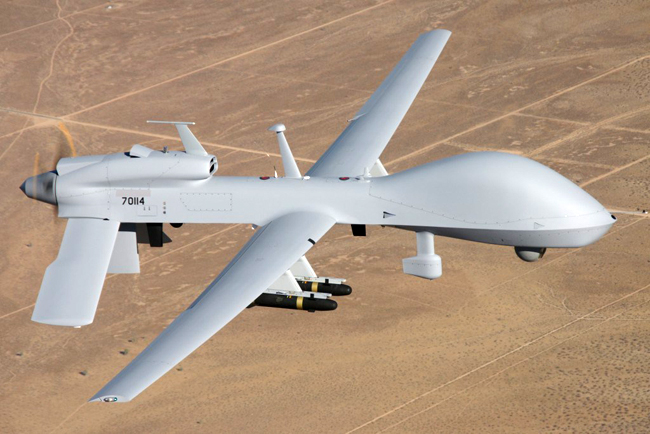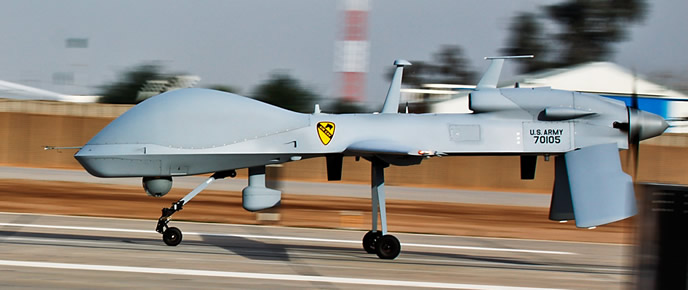
An enhanced version of the MQ-1C version of General Atomics’ Predator Remotely Piloted Aircraft (RPA) took to the air July 26, 2013 at the company’s El Mirage Flight Operations Facility in Palmdale, Calif. It was the first flight of the U.S. Army’s Improved Gray Eagle (IGE), a next-generation derivative of the combat-proven Block 1 Gray Eagle Unmanned Aircraft System (UAS) that has accumulated over 70,000 flight hours since 2008.
IGE is a capability enhancement over the Block 1 Gray Eagle configuration and was designed for increased endurance, with 23 additional hours for reconnaissance missions. The aircraft’s payload capacity features 50-plus percent more payload carriage than Gray Eagle, while also offering 50 percent more fuel capacity via its deep belly fuselage. An upgraded centerline hardpoint supports integration of a 500 pound optional external fuel tank or 360 degree sensor payload–over twice the capability of the current Gray Eagle.

“Improved Gray Eagle will provide a game-changing capability, adding more endurance, more payload carriage, with increased reliability for our Army customer”, said Frank W. Pace, president, Aircraft Systems Group, GA-ASI. Part of these capabilities derive from the introduction of IGE’s additional space, combined with an improved Heavy Fuel Engine (HFE), provides growth capability for an improved airworthiness design, with the potential of incorporating lightning protection, damage tolerance, and Traffic Collision Avoidance System (TCAS) features.
The Gray Eagle performs long-endurance surveillance, communications relay, and weapons delivery missions with double the weapons capacity of the combat-proven Predator. Featuring a HFE for increased supportability in the field, the aircraft is also equipped with triple redundant avionics, redundant flight controls/ surfaces, and Electro-optical/Infrared (EO/IR) and Synthetic Aperture Radar (SAR) payloads.
Gray Eagle is currently operational with two RPA platoons operating Block 1 aircraft. The Defense Acquisition Board approved the Gray Eagle’s full-rate production on June 14, 2013. The Army expects to buy 49 additional systems over the next five years, these systems will be assigned to every Active Component Division Headquarters, supporting Combat Aviation Brigades, and subordinate Brigade Combat Teams.


















